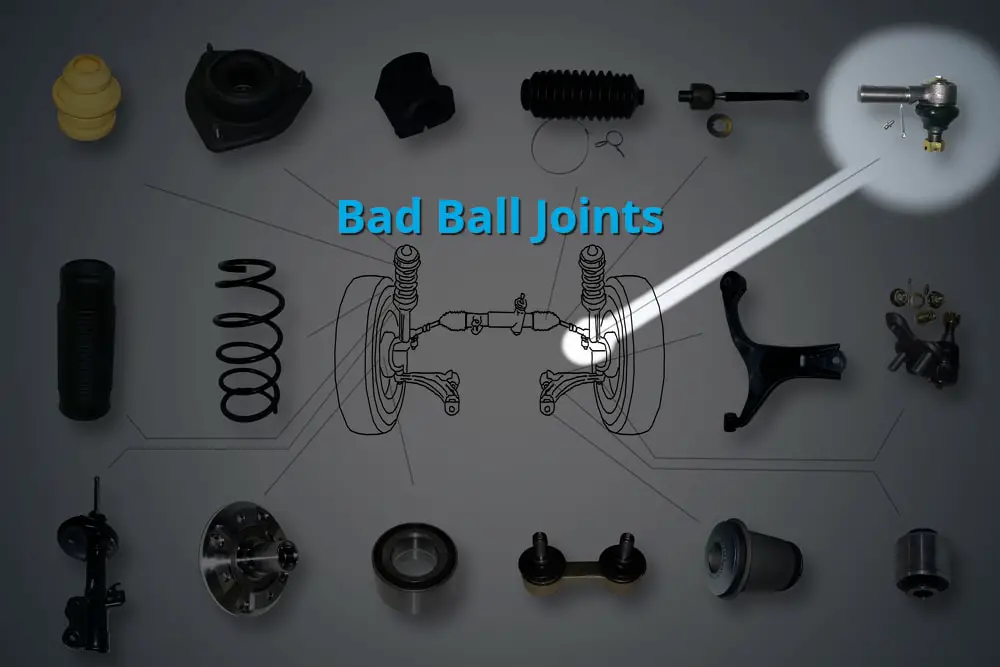Think you got bad ball joints?
So you’re having some issues with your car’s suspension and you want to get a better understanding of what may be causing it before you take it into the shop to avoid getting “taken for a ride” so-to-speak.
No? Maybe you’re just curious what exactly ball joints are.
Or you could just be a car nerd like myself and you want to be able to explain to grandma in excruciating detail the differences between a ball joint and a tie rod at Thanksgiving.
I’m not here to judge. I’m here to help.
In this article we’ll go over:
- The Function of a ball joint
- The Anatomy of a ball joint
- The symptoms of bad ball joints, both upper and lower
- Why a worn ball joint would cause uneven tire wear
- Why it’s dangerous to drive with failing ball joints
- A ballpark idea of the cost to replace loose ball joints
What exactly does a ball joint do?
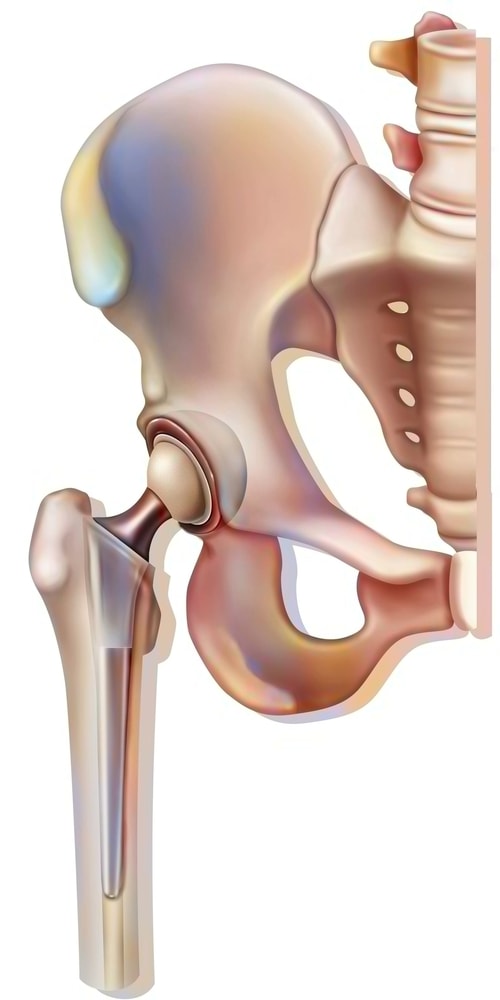
A ball joint is a component of a car’s suspension system that connects the steering knuckles to the control arms. The ball joint allows for smooth movement while turning and driving over uneven surfaces. It is essentially a ball-and-socket joint that allows for a range of motion similar to the human hip joint.
The ball joint allows the wheels to move up and down as the car goes over bumps and uneven surfaces, while still allowing the wheels to turn. Without ball joints, the suspension would not be able to properly absorb the impact of the road and the steering would be extremely limited.
The ball joints are designed to withstand a significant amount of stress, including the weight of the vehicle, the forces of braking and acceleration, and the forces of turning and going over bumps and uneven surfaces.
Ball joints tend to last a long time but due to their constant use, they do wear out eventually. Driving over rough or uneven surfaces or heavy loads often can cause them to wear out faster.
Anatomy of a Ball Joint:
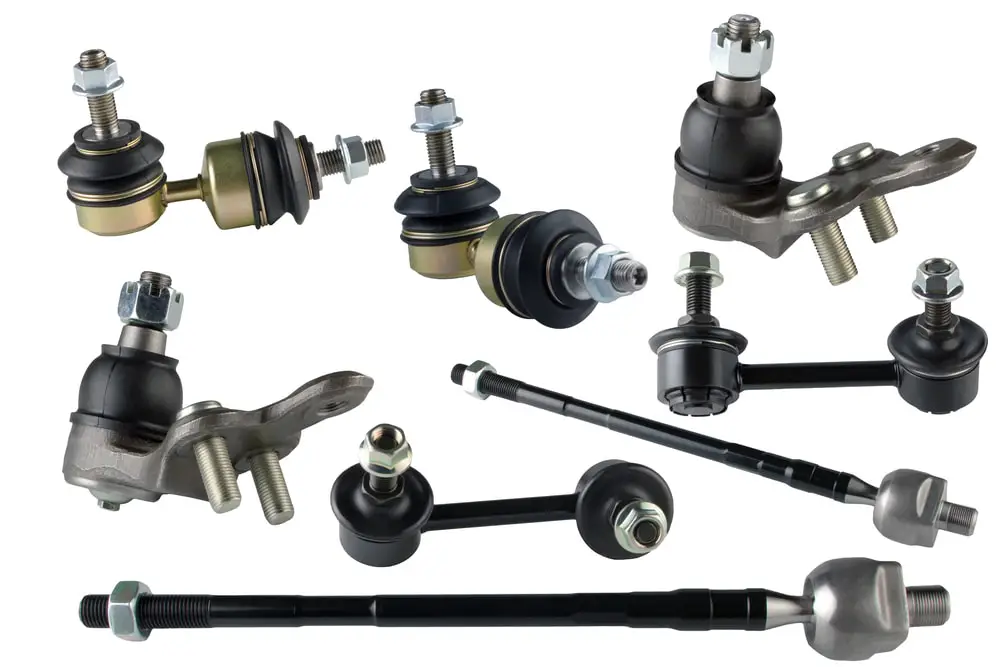
The ball joint consists of a ball and socket assembly that is enclosed by a metal housing. The ball stud is made of steel and is connected to the steering knuckle. The socket is connected to the control arm and is filled with grease to reduce friction and wear.
- Ball Stud: This one is pretty self explanatory. It’s a stud with a ball on the end.
- Metal Housing: This protects the internal components from dust, debris, and other contaminants. The housing also helps to distribute the load evenly across the ball joint.
- Boot: A rubber or neoprene boot is often used to seal the ball joint and keep the lubricant inside, this is to avoid contamination of the lubricant and protect the internal components.
- Snap ring: Some ball joints also have a snap ring which holds the ball and socket assembly in place inside the housing.
- Grease fittings: Some ball joints have a grease fitting, this allows the mechanic to lubricate the ball joint with fresh grease, this is an important step in maintaining the ball joint.
If you’re interested in the nitty gritty technical aspects of the design, Google Patents is a great resource. Here’s the link:
https://patents.google.com/patent/US3850443A/en
It’s worth noting that the design of some modern ball joints can vary depending on the manufacturer. Some car manufacturers have their own design for ball joints that includes proprietary features, but the basic functionalities and components remain the same.
Symptoms of a worn upper ball joint:
- Uneven wear on the inside edge of the tire
- Steering pulling to one side while driving
- Loose or vague steering wheel
- A clunking noise when going over bumps or when turning.
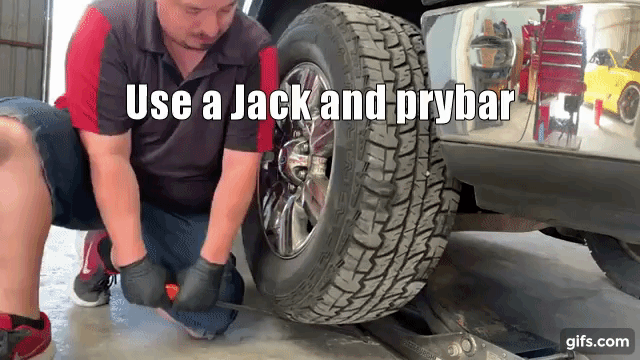
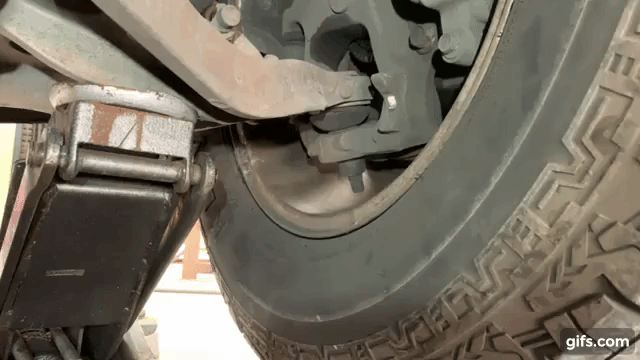
Symptoms of a worn lower ball joint:
- Uneven wear on the outside edge of the tire
- Loose or shaky steering
- Difficulty steering or steering that feels heavy
- Suspension collapsing or sagging on one side
- A clunking noise when turning the steering wheel or when accelerating or decelerating.
If you’ve got worn ball joints, check your tie rods also. We have a guide to bad tie rods.

Can a bad ball joint cause uneven tire wear?
Yes, it can! This is because the ball joint is a pivot point located between the control arm and the steering knuckle, which allows the front wheels to move up and down while also allowing for steering movement. When the ball joint wears out, it becomes loose and allows the wheels to move out of position, which can cause uneven wear.
Is a bad ball joint dangerous?
Worn ball joints can cause a variety of problems with a car’s suspension and handling, and in extreme cases, can even cause the steering knuckle to separate from the control arm, which can cause a loss of control of the car and a potential accident.
I’m sure you’ve seen those cars on the side of the road with a wheel or two that’s folded underneath the car and the body of the vehicle collapsed on top of it. Nobody wants that happening on the road while they’re driving.
Don’t be that guy. If you are experiencing any of the symptoms above and are not confident in your mechanical abilities do not hesitate to get your vehicle inspected by a professional.
Notice I said professional. That does not include your Uncle that does all his own oil changes and forgot to reinstall the drain plug that one time… 🙂
What causes ball joints to wear fast?
The most common destroyer of ball joints that we have found are:
- Gravel roads
- Off-roading
- Wash boards
- Speed bumps
- Large potholes
- Oversized wheels and tires
Listen, this front suspension component will eventually wear out. But if you’re buying new ball joints every 15,000 miles there could be a bigger problem. If possible, try to avoid those big bumps in the road, going overlanding/offroading, or slapping huge 35×12.5 R20 mud tires and wheels on your rig.
Cost to repair a failing ball joint:
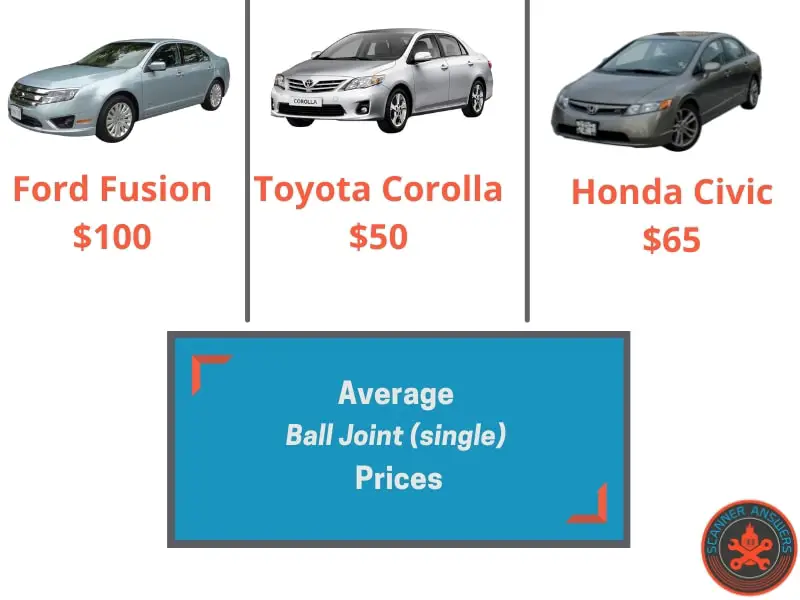
The cost of repairing or replacement can vary depending on a number of factors, including the make and model of the car, the quality of part used, and the cost of labor.
Hire a professional mechanic: The cost can range from $200 to $600 or more, depending on the factors mentioned above. This cost includes the cost of material, as well as the cost of labor.
DIY: If you choose to do the work yourself, the cost will depend on the cost of the ball joints, which can range from around $20 to $100 or more, depending on the make and model of the car. You will also need to factor in the cost of any tools or equipment needed to perform the repair or replacement.
Example vehicles
A pair of 2012 Toyota Camry lower ball joints cost $100 total for a driver and passenger pair:
For a heavy duty truck like the 2000-2002 Dodge Ram 2500/3500, you’ll have to shell out about $650 to replace the upper and lower front ball joints (Four total)
https://www.cjcoffroad.com/products/emf-2000-2002-dodge-ram-2500-3500-heavy-duty-ball-joints
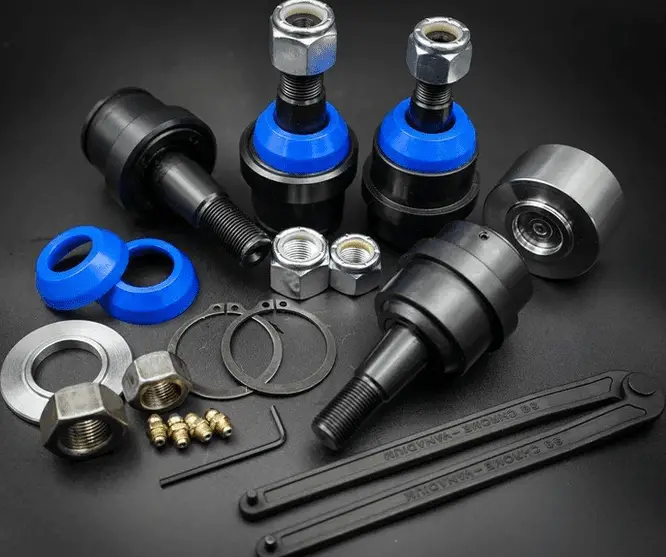
A heavy duty modern ball joint press is a must if you DIY this job:
No products found.
IMPORTANT
As always, if you are not highly confident in your mechanical abilities do not attempt to replace these parts yourself. Hire a professional. I cannot stress just how dangerous it is to install these suspension components incorrectly and drive on public roads.
Learn more about ball joints vs tie rods
